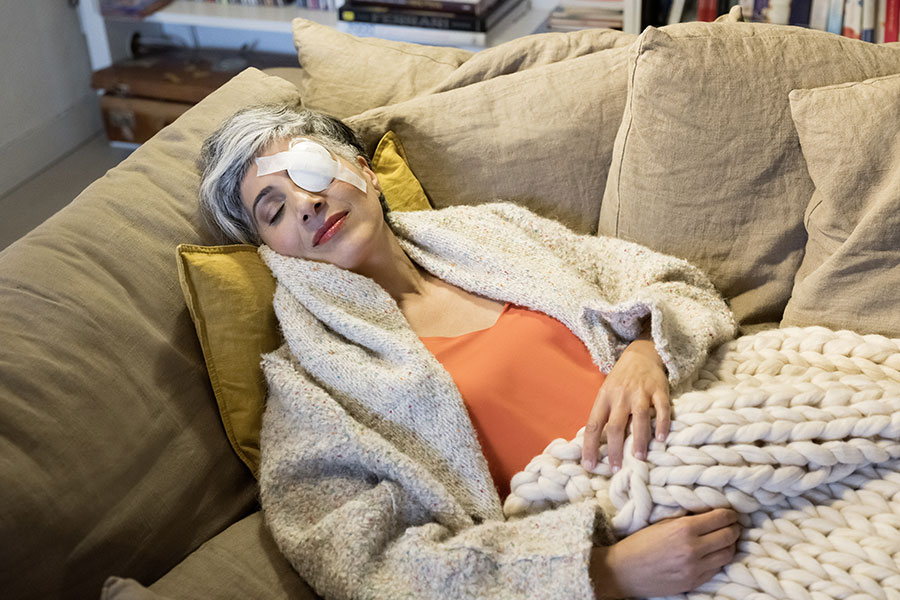Cataract
What is a Cataract?
A cataract is a gradual and progressive clouding of the otherwise clear lens of the eye. Although the outbreak of the cataract is frequent among older people, it can affect younger as well. Known as a common part of the eye’s aging process, it can be eventually caused by:
- Unhealthy lifestyle (smoking, drinking too much alcohol, not eating enough fruits and veggies)
- Environmental factors (exposition to ultraviolet radiation)
- Use of specific kinds of medicine (for instance corticosteroids to treat patients affected by asthma)
- Eye injury
- Hereditariness

What are the symptoms of a cataract?
The patient may not have any symptoms at first. The clouding of the clear lens grows in a gradual way, causing a progressive loss of the visual quality, in such a slow way that at the beginning patients don’t even realize about the appearance of this problem.
Other common symptoms are:
| Blurred vision |
| Changes in the way the patient sees the colours |
| Double vision |
| Seeing a halo around lights |
| Sensitivity to bright sunlight, lamps or headlights |
| Worsening of night vision quality |
Cataract

Normal vision

How is a cataract diagnosed?
Cataract is diagnosed with a common eye examination, during which the ophthalmologist analyzes the eye with great care, carrying out non-invasive and painless tests.
What can the patient expect by surgery?
The cataract surgery, a common, safe and efficient practice, is the only way to correct the problem. It consists of the removal of the opaque crystalline lens with the consequent replacement of an artificial optic lens (called intraocular lens IOL). Surgery is absolutely painless thanks to the action of anesthetic eye drops. The surgical procedure lasts generally about 20 minutes and the patient can come back home in the same day.

Intraocular Lens
Intraocular lens (IOL) is a tiny biocompatible artificial lens that replaces the crystalline lens affected by the cataract. Such lens is not visible externally and it is imperceptible for the person who wears it. There are different kind of intraocular lens and the choice depends on the features and needs of our eye:
Monofocal IOLs
That allow to see clearly from afar but they need the use of glasses to focus closely (for instance, to read a book or smartphone). These lenses can be also designed to correct astigmatism (TORIC IOLs).
Multifocal IOLs
That allow to see without glasses at more than one distance: closely (to read the book) intermediate distance (to read computer) and from afar (road sign). These lenses can be also designed to correct astigmatism (MULTIFOCAL-TORIC IOLs).
EDOF IOL
Acronym for Extended depth of focus, è a valid alternative designed for younger patients who need a comfortable vision during ordinary activities (useful from afar and for the intermediate distance)
Post-operative treatment
During post-operative period, it is important to protect the eye, wearing sunglasses throughout the day and a protective shield during the nighttime. Moreover the patient will receive a complete list of Dos and Don’ts at the moment of dismissal, in addition to the pharmacological treatment.
How do you see after cataract surgery?
After cataract surgery it is possible to recover an optimal vision without the need of undergoing another laser surgery. This is possible because the artificial lenses implanted not only allow to solve cataract, but also to correct the potential co-presence of myopia, astigmatism, hypermetropia and/or presbyopia. In so doing, you can definitely get rid of glasses or contact lenses.

What happens if you don’t have cataract surgery?
If not treated a cataract can resolve in a much more advanced and complex clinical picture. It is the case of the brunescent cataract, in which the crystalline lens loses completely its transparency, making the patient visually impaired. Anyway this problem can be solved by surgery. In order to reduce risks and recovery time, it is strongly recommended to have surgery before this clinical condition appears.